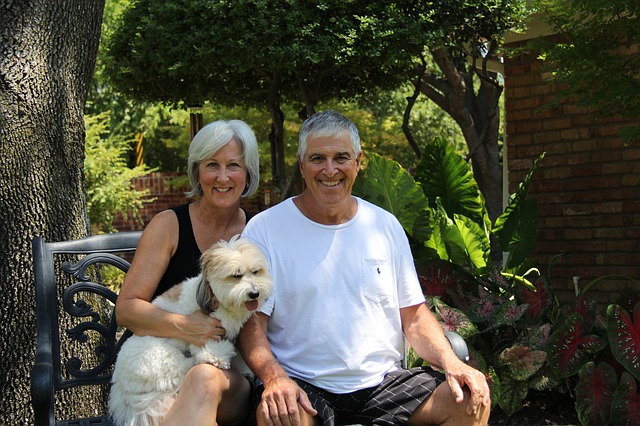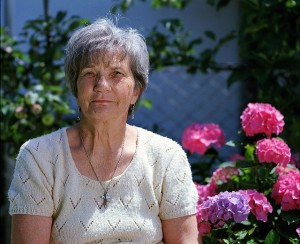- Calls to this hotline are currently being directed to Within Health, Fay or Eating Disorder Solutions
- Representatives are standing by 24/7 to help answer your questions
- All calls are confidential and HIPAA compliant
- There is no obligation or cost to call
- Eating Disorder Hope does not receive any commissions or fees dependent upon which provider you select
- Additional treatment providers are located on our directory or samhsa.gov
Common Types of Eating Disorders Observed in the Elderly Population

While eating disorder sufferers are commonly stereotyped as being young, Caucasian, females the reality is that eating disorders do not discriminate based upon factors such as age, race, gender, or social class. Eating disorders that occur in elderly individuals may often go unnoticed or unrecognized.
“However, there is growing evidence that women aged 30 and above are increasingly struggling with disordered eating. This is an alarming trend that is on the rise.” [1]
Elderly Face Unique Challenges
Elderly individuals who are struggling with eating disorders often face unique challenges in regards to proper identification of their disorder, access to appropriate treatment, and the challenge of treating an eating disorder with co-morbid physical impairments or conditions.
Because eating disorders are frequently misperceived as being an illness that only impacts “young people,” the early warning signs of an elderly individual who is struggling with an eating disorder are often missed by family members, doctors, and loved ones. The following are some early warning signs that could indicate that an elderly individual is struggling with an eating disorder:
- Changes in behavior ie using the bathroom after eating a meal
- Increased sensitivity to cold
- Hair loss, gastrointestinal problems, dental issues
- A person desires to eat alone rather than with friends or family members
- Excessive hair loss, dental damage, or heart or gastrointestinal problems. [2]
Common Disorders Among Elderly
Eating disorders that are common among the elderly include anorexia nervosa and bulimia nervosa. A literature review, which examined published cases of eating disorders in people over 50 years old found that “The majority (81%) of cases had anorexia nervosa, and 10% had bulimia nervosa. Late-onset eating disorders were more common (69%) than early onset.” [3]
Further, while eating disorders can manifest similarly across the lifespan-there are a variety of different factors to take into account when diagnosing and treating an elderly individual that is struggling with an eating disorder.

For instance, there are similarities in regards to how anorexia might manifest in elderly vs. young individuals. Both tend to refuse meals by stating that they are feeling ill, are not hungry, or are too full. Both groups tend to have distorted body image, engage in secretive behaviors, struggle with expressing their feelings and may be experiencing family conflict. Both groups might utilize purging behaviors, however, laxative use is more common among elderly individuals. [4]
In regards to bulimia nervosa, while the symptoms may be similar regardless of the person’s age-the health risks may be even more severe for elderly individuals. It is important to note that bulimia nervosa is highly dangerous at any age, however, older individuals with bulimia often run a high risk of experiencing heart issues. [5]
Additionally, assisted living facilities may be unequipped to recognize and treat elderly individuals who are struggling with bulimia nervosa. Cynthia Bulik, a professor of eating disorders through the School of Medicine at University of North Carolina at Chapel Hill, exemplified this point when she stated, “We have seen cases of laxative abuse in assisted care facilities, where they often hand laxatives out like candy, but the patients clearly had eating disorders and were using laxatives to purge.” [6]
The Impact of Eating Disorders on the Elderly
 Bulik also discussed the impact that eating disorders can have on the elderly when she stated; “”One of the main concerns is that eating disorders take a tremendous toll on just about every bodily system.
Bulik also discussed the impact that eating disorders can have on the elderly when she stated; “”One of the main concerns is that eating disorders take a tremendous toll on just about every bodily system.
In old age, these body systems are less resilient to begin with, just because of the aging process, so eating disorders can erode them more quickly and more seriously.” [7]
It is important that we work to raise awareness of both the prevalence, as well as specific treatment considerations of eating disorders among elderly individuals-so that we can improve early recognition and treatment outcomes for this population. Everyone who is struggling with an eating disorder deserves to have access to appropriate treatment-no matter what age they are. Full recovery is possible-it is never too late.
 About the author:
About the author:
Jennifer Rollin, MSW, LGSW is a therapist, body-image activist, and writer who specializes in working with adolescents, body image concerns, survivors of trauma, and mood disorders. Jennifer is a blogger for The Huffington Post and Psychology Today, as well as a contributing writer for Eating Disorder Hope.
For body-positive, self-love, inspiration, “like” her on Facebook at Jennifer Rollin, MSW, LGSW.
References:
[1]: Middle-aged women and eating disorders. (2013). Retrieved from https://www.eatingdisorderhope.com/treatment-for-eating-disorders/special-issues/older-women[2]: Schaeffer, J. (n.d.) Elder eating disorders surprising new challenges. Retrieved from http://www.todaysgeriatricmedicine.com/news/exclusive_0409_03.shtml
[3]: Maria I. Lapid, Maria C. Prom, M. Caroline Burton, Donald E. McAlpine, Bruce Sutor and Teresa A. Rummans (2010). Eating disorders in the elderly. International Psychogeriatrics, 22, pp 523-536.
[4]: Rosen, N. (2010). Anorexia nervosa in the elderly. Retrieved from http://www.eatingdisordersrecoverytoday.com/anorexia-nervosa-in-the-elderly/
[5]: Howard, C. (2015). Bulimia nervosa in the elderly. Retrieved from: https://www.eatingdisorderhope.com/blog/bulimia-nervosa-in-the-elderly
[6]: McIntosh, J. (2015). Older people and eating disorders: not ‘just a teenager’s problem.’ Retrieved from http://www.medicalnewstoday.com/articles/290023.php
[7]: McIntosh, J. (2015). Older people and eating disorders: not ‘just a teenager’s problem.’ Retrieved from http://www.medicalnewstoday.com/articles/290023.php
The opinions and views of our guest contributors are shared to provide a broad perspective of eating disorders. These are not necessarily the views of Eating Disorder Hope, but an effort to offer discussion of various issues by different concerned individuals.
We at Eating Disorder Hope understand that eating disorders result from a combination of environmental and genetic factors. If you or a loved one are suffering from an eating disorder, please know that there is hope for you, and seek immediate professional help.
Published on February 25, 2016
Last Updated & Reviewed By: Jacquelyn Ekern, MS, LPC on April 16, 2019
Published on EatingDisorderHope.com

The EatingDisorderHope.com editorial team comprises experienced writers, editors, and medical reviewers specializing in eating disorders, treatment, and mental and behavioral health.

